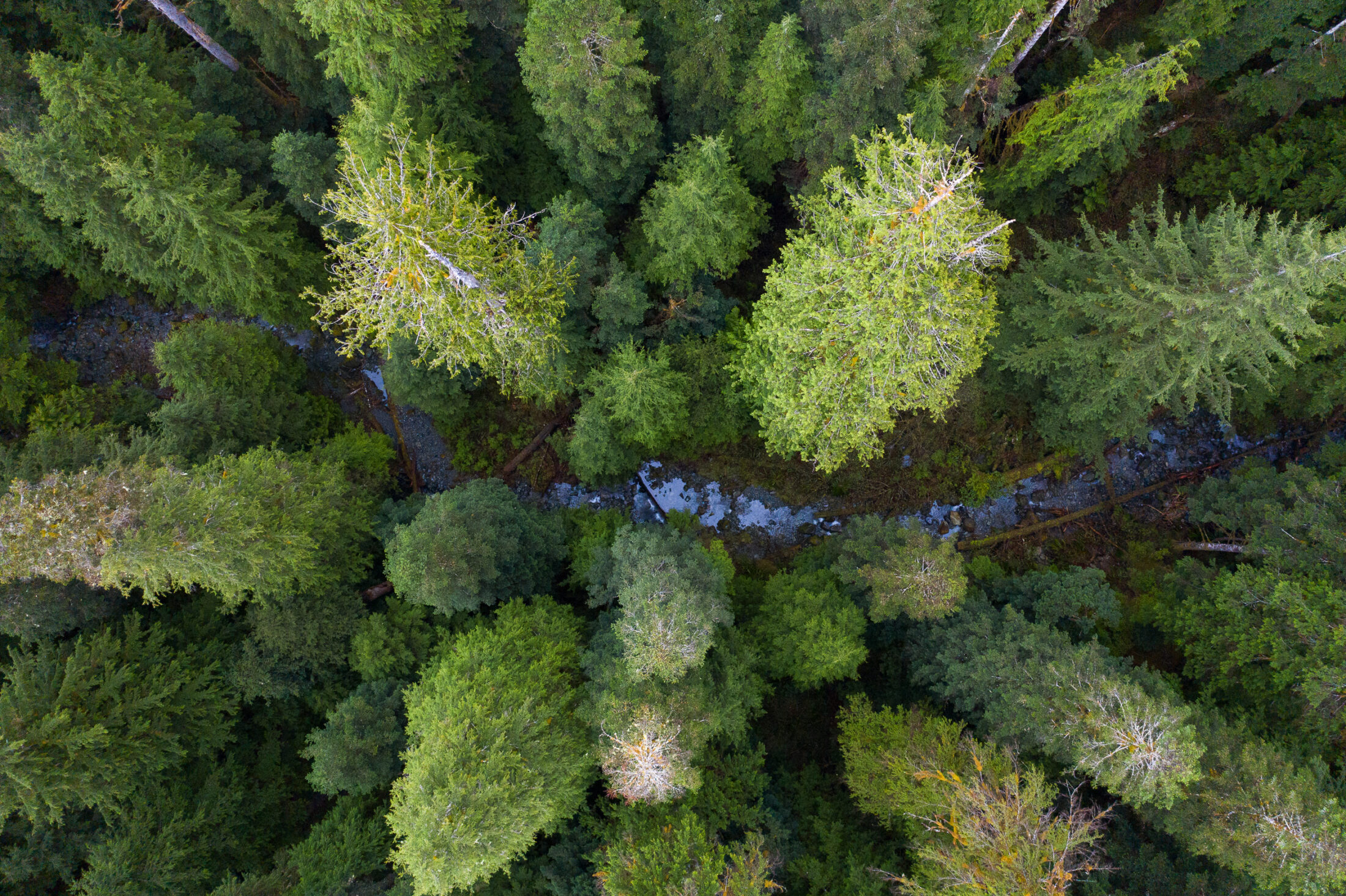
B.C. Supreme Court rules logging company can’t claim financial losses due to conservation
Forestry giant Teal sued for $75 million in compensation after old-growth trees on Haida Gwaii...
B.C. is failing to protect nature and has missed international targets for conserving wildlife and biodiversity, according to a report card released on Thursday that gives the provincial government a failing grade in four out of five key categories.
“Biodiversity is the backbone of life,” said Charlotte Dawe, conservation and policy campaigner for the Wilderness Committee, which co-published the report with environmental law charity Ecojustice. “Yet B.C. governments, past and present, somehow remain ignorant to this reality. Their dismal actions prove they don’t understand the severity of the biodiversity crisis.”
The 22-page report calls B.C. a “poster child” for the global biodiversity crisis because it has both the greatest biodiversity in Canada and the most species — more than 1,300 — at risk of extinction.
“It’s disappointing to see that the province still has far to go to implement the necessary measures to protect biodiversity and habitat for species at risk,” Grand Chief Stewart Phillip, president of the Union of B.C. Indian Chiefs, said in a statement.
Grades in the report card are based, in part, on whether B.C. has met 2020 international targets to conserve the planet’s wildlife and biodiversity — targets which Canada committed to in 2010 at an Aichi, Japan, meeting of signatories to the UN Convention on Biological Diversity.
“We are in the midst of a biodiversity crisis on par with the climate crisis, and all governments need to step up to meet this challenge,” says the report, released two days before the International Day for Biological Diversity. “At the end of the Aichi decade, it’s time to evaluate how B.C. did.”
In the category of protection and recovery of species at risk, B.C. earns an “F” for being one of the few Canadian provinces without an endangered species law.
The NDP government promised to enact such legislation during the 2017 election campaign — a pledge upheld in Premier John Horgan’s first mandate letter for Environment Minister George Heyman. But, once elected, the party reneged on its commitment. Heyman’s 2020 mandate letter does not mention endangered species legislation.
The report notes the province hasn’t met the requirements it agreed to in the 1996 Accord for the Protection of Species at Risk in Canada. Shortfalls include failing to provide immediate protection from harm and long-term habitat protection for threatened and endangered species and preventative measures to keep species from becoming at-risk.
The report uses the fisher, a furry animal the size of a cat but stretched out like a limo, as a case study. Even though interior fisher populations were red-listed last year, meaning they are endangered, and boreal populations remain blue-listed, meaning they are vulnerable to extinction, the B.C. government approved winter trapping for fisher, the report points out, saying “it is not typical for red-listed species to be harvested.”
Ecojustice and Wilderness Committee are calling on B.C. to enact a stand-alone endangered species law or an overarching biodiversity law to protect and recover species, underscoring in the report that “habitat protection is the ultimate test of whether a species or other biodiversity law is likely to be effective.”


The report also debunks the B.C. government’s claims that it protects and recovers species at risk through “complex” ecosystem approaches, noting, “It doesn’t,” and giving the province a “F” for protection and recovery of ecosystems.
“When paired with effective endangered species laws, protecting ecosystems can be a good way to protect and recover biodiversity,” the report states.
To protect and recover ecosystems, the province would generally need to protect 50 per cent or more of each ecosystem or region for this approach to save most of B.C.’s wildlife, according to the report. “B.C. protects far less than this, with many endangered habitats receiving well under 10 per cent protection.”
The report uses the example of B.C.’s coastal Douglas-fir zone, found on low elevation areas on parts of the mainland coast, the Gulf Islands and the southeastern coast of Vancouver Island. The zone is one of the smallest and rarest biogeoclimatic zones in B.C., covering only 0.3 per cent of the province, and is one of Canada’s most endangered ecosystems. It’s also home to the highest number of species at risk in B.C, including Garry oak trees, northern goshawk, marbled murrelet and the Vancouver Island screech owl.

But despite its rarity and importance, the Douglas-fir ecosystem is the least protected zone in B.C. and has the lowest number of protected areas greater than 250 hectares, most in “small, isolated parcels surrounded by development,” the report notes.
Another Aichi commitment requires the province to reduce the loss of all natural habitats by 50 per cent from 2010 levels. “B.C. failed to achieve this,” the report says, assigning another “F” and noting that B.C. does not have the laws necessary to achieve this target.
For example, the province’s forestry laws prohibit the government from reducing the industrial timber harvest by more than one per cent, “even when much greater reductions are needed to protect biodiversity,” the report says. Yet it also notes B.C. has an opportunity to make up for lost time by protecting significant proportions of native ecosystems and ensuring habitat loss is reduced by more than 50 per cent from 2010 levels.
In a fourth category, called “other laws to protect biodiversity,” B.C. also scored an “F.” B.C. claims to protect biodiversity through several different laws that regulate specific industry sectors, such as forestry or oil and gas. “It doesn’t,” the report bluntly states.
The B.C. government’s sector-specific approach “has created a patchwork of rules that do not effectively or consistently protect all species at risk or their habitats from all types of human-related impacts across all types of land use,” the report observes.
It points to an old-growth strategic review panel established by the NDP government which proposed that the province enact a new, overarching biodiversity law to prioritize ecosystem health and biodiversity conservation across all sectors.
“B.C. has not made any progress towards enacting such a law,” the report says, noting B.C. could become a world leader in the protection of the natural world if it developed a strong, innovative biodiversity law in cooperation with Indigenous groups.
Only in the area of parks and protected areas did B.C. achieve a passing grade, scoring a “C-.” The Aichi biodiversity targets required that Canada protect at least 17 per cent of its land-base by 2020 and the province came close to the goal, protecting 15.5 per cent.
B.C.’s grade was not higher in this category because it received poor marks for the transparency and reliability of claims about the amount of land covered by what the province calls “other conserved” areas and for the “poor connectivity and representativeness” of protected areas.
The B.C. government says almost 20 per cent of the province has been protected, but the report says that claim is based on “dubious provincial accounting.”

B.C. is the only province to make significant use of a category called “other conserved areas,” which the provincial government says adds an additional four per cent to the protected areas tally. But most of the four per cent has not been set aside for long-term protection and falls into areas where considerable industrial development is still permitted, Ecojustice and Wilderness Committee note.
According to standards accepted by B.C., areas should only be considered protected or conserved “if all industrial development incompatible with biodiversity conservation is prohibited, and if protections are intended to be permanent,” the report notes.
It says B.C. must develop and implement a strategy for meeting future Canadian and international targets for its legitimate protected areas, including 25 per cent by 2025 and 30 per cent by 2030.
Wilderness Committee and Ecojustice are also calling on the B.C. government to promote Indigenous-led conservation in order to meet Canada’s targets for protected areas and commitments in keeping with the UN Declaration on the Rights of Indigenous People.
A UBC-led study that analyzed data from Australia, Brazil and Canada found the total numbers of birds, mammals, amphibians and reptiles were the highest on lands managed or co-managed by Indigenous communities.
Grand Chief Phillip said it is “well past time” for the province to prioritize biodiversity conservation and work with First Nations to establish protected areas in accordance with their own conservation commitments and the Declaration on the Rights of the Indigenous Peoples Act.
The report card comes as scientists around the world warn we are witnessing the sixth mass extinction event in the planet’s four-billion-year history. As many as half of all species on the planet may be headed toward extinction in the next 30 years, largely due to habitat destruction.
Ecojustice executive director Devon Page said the B.C. government has a window of opportunity to take strong, innovative action in partnership with Indigenous groups to protect and restore the province’s species and natural systems.
“Without that action, we stand to lose much of what makes B.C. a beautiful and healthy place to live,” Page said. “To borrow a phrase from Premier [John] Horgan, ‘do not blow this for the rest of us.’”
Updated April 27, 2021, at 10:46 a.m. PT: This article was updated to clarify that B.C. isn’t the only province to have a category of “other conserved areas” but is the only province to make significant use of such areas.
Content for Apple News or Article only Get the inside scoop on The Narwhal’s environment and climate reporting by signing up for our free newsletter. This...
Continue reading
Forestry giant Teal sued for $75 million in compensation after old-growth trees on Haida Gwaii...

An Alberta government-commissioned report suggests oil and gas site companies may be able to install...

This story about a lawsuit involving First Nations in northern Ontario has deep roots — in...

